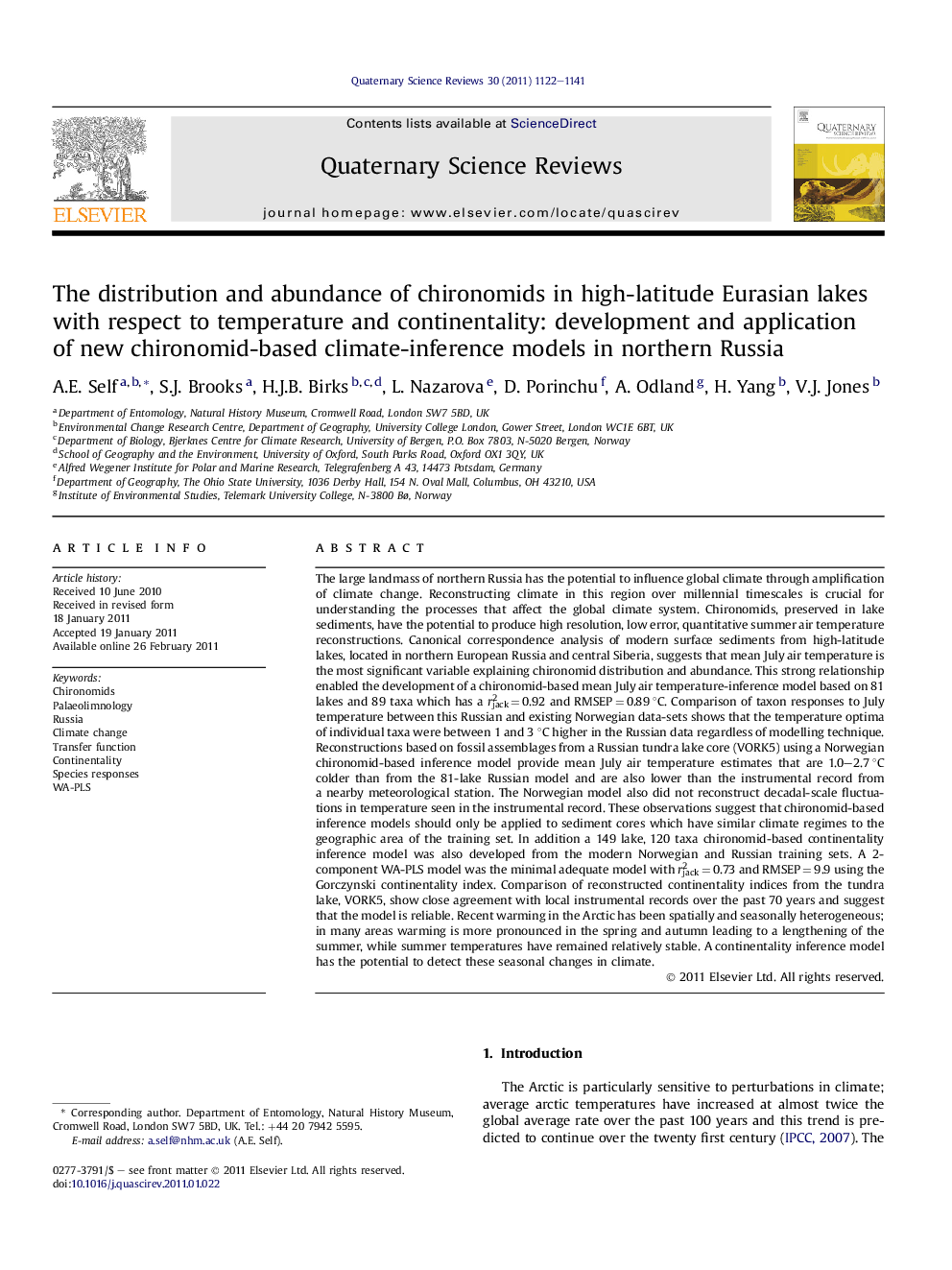| کد مقاله | کد نشریه | سال انتشار | مقاله انگلیسی | نسخه تمام متن |
|---|---|---|---|---|
| 4735524 | 1640913 | 2011 | 20 صفحه PDF | دانلود رایگان |

The large landmass of northern Russia has the potential to influence global climate through amplification of climate change. Reconstructing climate in this region over millennial timescales is crucial for understanding the processes that affect the global climate system. Chironomids, preserved in lake sediments, have the potential to produce high resolution, low error, quantitative summer air temperature reconstructions. Canonical correspondence analysis of modern surface sediments from high-latitude lakes, located in northern European Russia and central Siberia, suggests that mean July air temperature is the most significant variable explaining chironomid distribution and abundance. This strong relationship enabled the development of a chironomid-based mean July air temperature-inference model based on 81 lakes and 89 taxa which has a rjack2 = 0.92 and RMSEP = 0.89 °C. Comparison of taxon responses to July temperature between this Russian and existing Norwegian data-sets shows that the temperature optima of individual taxa were between 1 and 3 °C higher in the Russian data regardless of modelling technique. Reconstructions based on fossil assemblages from a Russian tundra lake core (VORK5) using a Norwegian chironomid-based inference model provide mean July air temperature estimates that are 1.0–2.7 °C colder than from the 81-lake Russian model and are also lower than the instrumental record from a nearby meteorological station. The Norwegian model also did not reconstruct decadal-scale fluctuations in temperature seen in the instrumental record. These observations suggest that chironomid-based inference models should only be applied to sediment cores which have similar climate regimes to the geographic area of the training set. In addition a 149 lake, 120 taxa chironomid-based continentality inference model was also developed from the modern Norwegian and Russian training sets. A 2-component WA-PLS model was the minimal adequate model with rjack2 = 0.73 and RMSEP = 9.9 using the Gorczynski continentality index. Comparison of reconstructed continentality indices from the tundra lake, VORK5, show close agreement with local instrumental records over the past 70 years and suggest that the model is reliable. Recent warming in the Arctic has been spatially and seasonally heterogeneous; in many areas warming is more pronounced in the spring and autumn leading to a lengthening of the summer, while summer temperatures have remained relatively stable. A continentality inference model has the potential to detect these seasonal changes in climate.
► Chironomids in northwestern Russia are strongly influenced by July air temperature.
► A chironomid-based mean July air temperature-inference model was developed.
► Temperature optima of individual taxa were 1–3 °C higher in Russia than Norway.
► Models are most applicable in areas with similar climate regimes as the training set.
► A continentality inference model was developed from Norwegian and Russian data.
Journal: Quaternary Science Reviews - Volume 30, Issues 9–10, May 2011, Pages 1122–1141